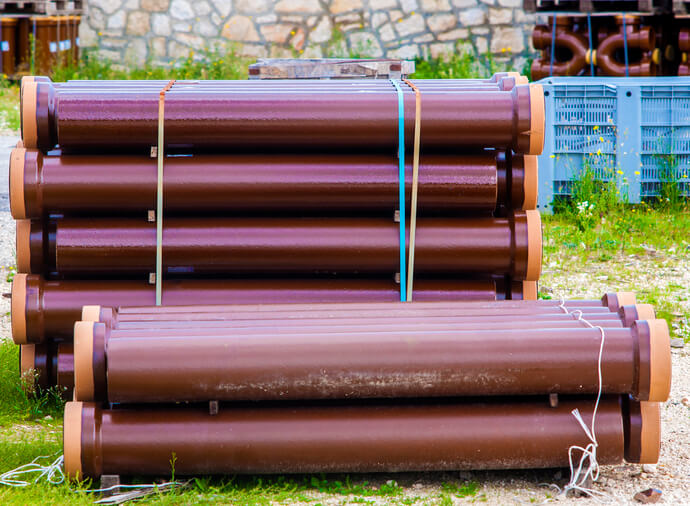What Does
Vitrified Clay Pipe Mean?
Vitrified clay pipe (VCP) is a sturdy conduit widely used in gravity sanitary sewer collection mains and is the longest-lasting pipe material to date.
It is manufactured using clay and shale as raw materials and largely remains unaffected by age and abrasive effluents. Clay and shale are subjected to high temperatures to achieve vitrification, a process that results in a hard, inert ceramic.
VCP is environmentally friendly, strong and durable. Some pipes as old as 200 years are still operational. The rigidity of these pipes prevents problems like deflection and flattening when subjected to loads. They are also resistant to hydrogen sulfide corrosion that can easily damage cast iron and concrete pipes. The vitrification process provides additional resistance and protection against the loss of strength and degeneration without the use of the additional coating.
Trenchlesspedia Explains Vitrified Clay Pipe

istock/Getty Images
Vitrified clay pipe has physical properties that never change. The raw materials used in the manufacture of vitrified clay pipes are the end products of the weathering forces of nature that have leached soluble and reactive minerals from rock and soil, leaving behind an inert material. The end product, (i.e. the pipe,) therefore, is resistant to rust, corrosion, erosion, shrinkage, elongation, deflection, oxidation, and deterioration. VCP has a Mohs hardness of 9 and an average compressive strength of 18000 lbs resulting in a pipe that can withstand high jetting pressures and flow rates.
The Manufacturing Process of VCP
Specially selected clay and shale are blended to develop the inherent strength and load-bearing capacity of the pipe. The clay used for the manufacture of the VCP is found in hydrous alumina silicates, which have the desired plasticity, vitrification properties, and stability when subjected to high temperatures.
The clay mixture is first ground by crushing wheels in heavy perforated metal pans and then passed through fine vibrating screens to attain the necessary particle size. The resultant material is then mixed with water in a pug mill and forced through a vacuum, de-airing chamber to produce a smooth mixture. The clay is then extruded under high pressure to form the pipe. Voids are not formed as the mixture is subjected to extreme pressure.
The pipes are now transferred to drying rooms to remove the moisture. The kiln is gradually heated to an approximate temperature of 1100 degrees Celsius or 2000 degrees Fahrenheit. The first phase of the firing is slow to set the pipe shape and then the temperature is increased to achieve vitrification. The ceramic structure of the pipe interior portions is achieved at the highest temperature. Pipe cooling is also carried out in a controlled manner to prevent damage.
The pipes are tested for bearing strength in accordance with ASTM C700 Standard Specification for Vitrified Clay Pipe, Extra Strength, Standard Strength, and Perforated. ASTM C425 Standard Practice for Installing Vitrified Clay Pipelines is used for the final test for shear load, deflection, and hydrostatic pressure.